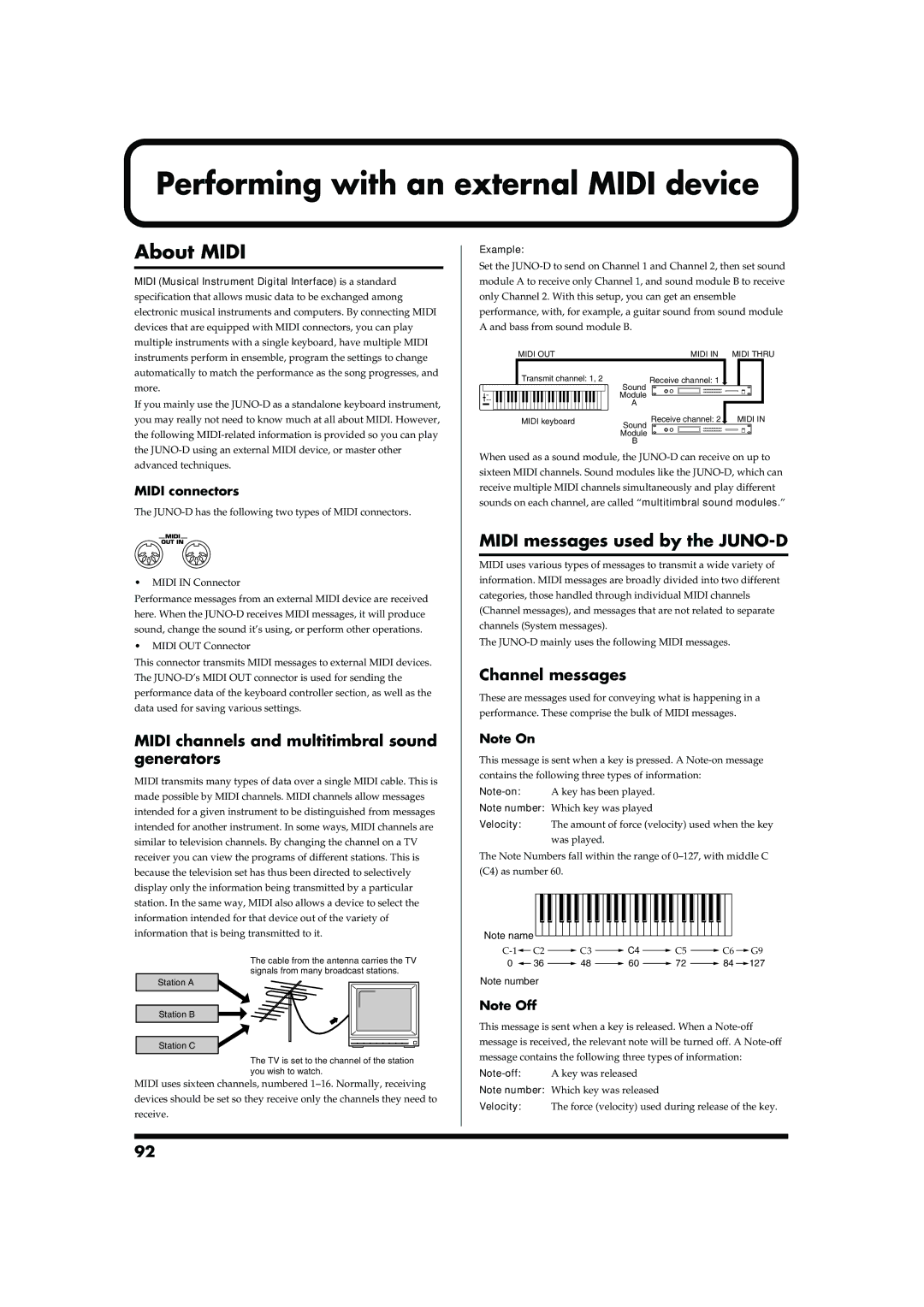
Performing with an external MIDI device
About MIDI
MIDI (Musical Instrument Digital Interface) is a standard specification that allows music data to be exchanged among electronic musical instruments and computers. By connecting MIDI devices that are equipped with MIDI connectors, you can play multiple instruments with a single keyboard, have multiple MIDI instruments perform in ensemble, program the settings to change automatically to match the performance as the song progresses, and more.
If you mainly use the
MIDI connectors
The
fig.r10-01
•MIDI IN Connector
Performance messages from an external MIDI device are received here. When the
•MIDI OUT Connector
This connector transmits MIDI messages to external MIDI devices. The
MIDI channels and multitimbral sound generators
MIDI transmits many types of data over a single MIDI cable. This is made possible by MIDI channels. MIDI channels allow messages intended for a given instrument to be distinguished from messages intended for another instrument. In some ways, MIDI channels are similar to television channels. By changing the channel on a TV receiver you can view the programs of different stations. This is because the television set has thus been directed to selectively display only the information being transmitted by a particular station. In the same way, MIDI also allows a device to select the information intended for that device out of the variety of information that is being transmitted to it.
fig.r10-02.e
The cable from the antenna carries the TV signals from many broadcast stations.
Station A
Station B
Station C
The TV is set to the channel of the station you wish to watch.
MIDI uses sixteen channels, numbered
devices should be set so they receive only the channels they need to
receive.
Example:
Set the
fig.r10-03.e
MIDI OUT | MIDI IN | MIDI THRU |
Transmit channel: 1, 2 | Receive channel: 1 |
|
| Sound |
|
| Module |
|
| A |
|
MIDI keyboard | Receive channel: 2 | MIDI IN |
| Sound |
|
| Module |
|
| B |
|
When used as a sound module, the
MIDI messages used by the JUNO-D
MIDI uses various types of messages to transmit a wide variety of information. MIDI messages are broadly divided into two different categories, those handled through individual MIDI channels (Channel messages), and messages that are not related to separate channels (System messages).
The
Channel messages
These are messages used for conveying what is happening in a performance. These comprise the bulk of MIDI messages.
Note On
This message is sent when a key is pressed. A
Note number: Which key was played
Velocity: The amount of force (velocity) used when the key was played.
The Note Numbers fall within the range of
fig.r10-04.e
Note name
![]()
![]() C3
C3 ![]() C4
C4 ![]() C5
C5 ![]() C6
C6 ![]() G9
G9
0 ![]() 36
36 ![]() 48
48 ![]() 60
60 ![]() 72
72 ![]() 84
84 ![]() 127
127
Note number
Note Off
This message is sent when a key is released. When a
Note number: Which key was released
Velocity: The force (velocity) used during release of the key.
92
